05 July 2019
At Milan “Remo Bianco. The imprints of memory“
Until 6 October the Museo del Novecento of Milan presents over 70 of the artist’s works
“True, I can never really say ‘I am working on something’, well yes I am working also on something but in the meantime inside of me
there is always a resonance of other moments, of other projects which I must carry on”.
Remo Bianco
The Museo del Novecento of Milan is continuing its research on the second half of the 20th century through the presentation of some of its leading artists, with special attention to those who worked in the Milan area and obtained successful experimental results. Remo Bianco. The imprints of memory, by Lorella Giudici, with the cooperation of the Remo Bianco Foundation, presents over 70 of the artist’s works, retracing the phases of his research and representing the course of his life and work, intertwined in a flow of extraordinary creative energy.
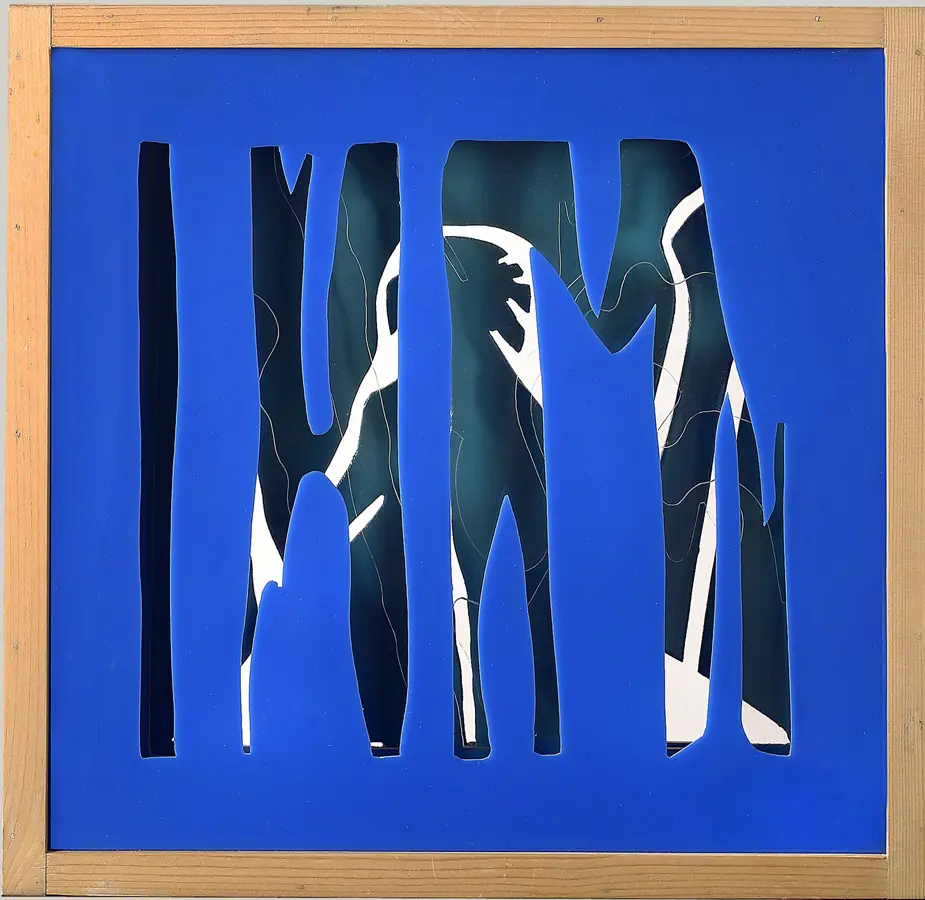
3D - Senza titolo, 1970 c., cm 43,4 x 43,4 x 6. N. archivio: FRB1929 Collezione Koelliker, inv. LKRB0206
In the Milan of the economic boom, in an atmosphere which was both culturally and economi- cally productive, the young Remo Bianco meets and spends time with the great painter Filippo de Pisis and his entourage. His life will be that of a “solitary researcher”, as he defined himself, always ready to experiment new ideas, the fruits of his fervid fantasy. This capacity of inventing and following new roads made of him a very peculiar artist for those years, capable of proposing new perspectives, with an amused attitude and always careful with materials used and with expressive intuitions.
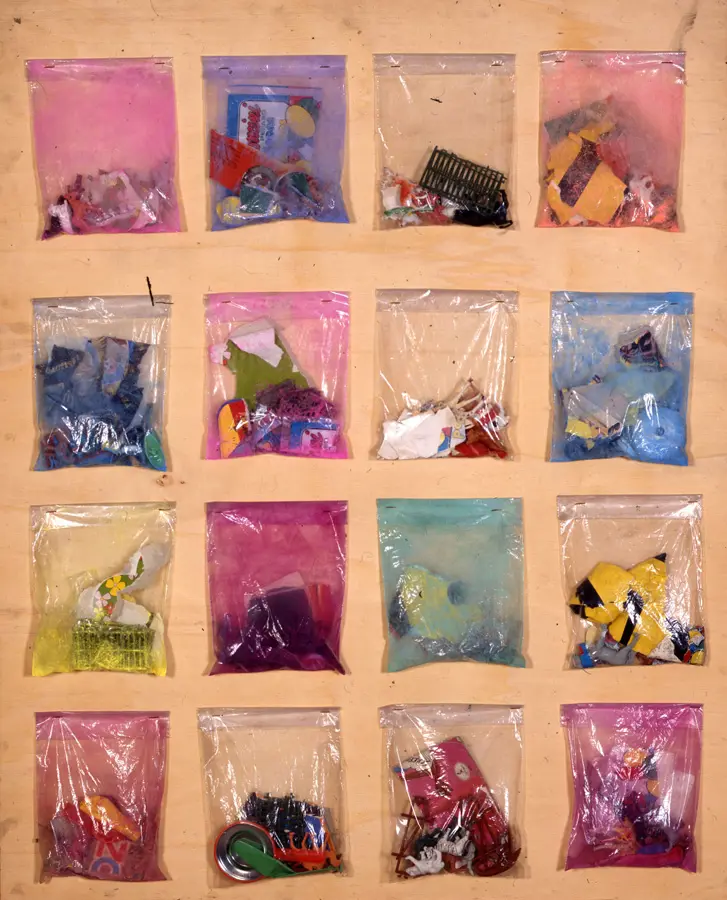
SACCHETTINI – Senza titolo, 1956. cm 102, 3 x 82,3. N. Archivio: FRB0250. Collezione privata.
Between the end of the Forties and beginning of the Fifties the first Imprints make their appear- ance; plaster casts, pressed carton or rubber obtained by the imprints left for example by a car on the asphalt, or by traces left by common objects, such as toys or tools. The artist’s purpose is to recover “the most humble things which usually end up being lost”, as expressed in the Manifesto dell’Arte Improntale (Imprint Art Manifesto) of 1956. The beginning of the Fifties is also the period of the Sacchettini – Testimonianze (Little plastic bags – Witnesses), the assembly of objects of little value – coins, seashells, small toys, fragments – and putting them in plastic sachets attached to pieces of wood in a regular layout and hung as a traditional painting.
In the same period also the first three-dimensional works make their entry on the artistic scene – the 3D – in transparent plastic material or glass and subsequently on wood, metal sheet and colored plexiglass, where the image is a combination of figures placed in succession on different planes, enhancing the depth of the work.
The Collages series was developed in the second half of the Fifties and up to the Eighties after Bianco’s trip to the United States; they are based on the effect of a combination of images obtained with the technique of dripping on a unique plane of canvas, paper or cloth.
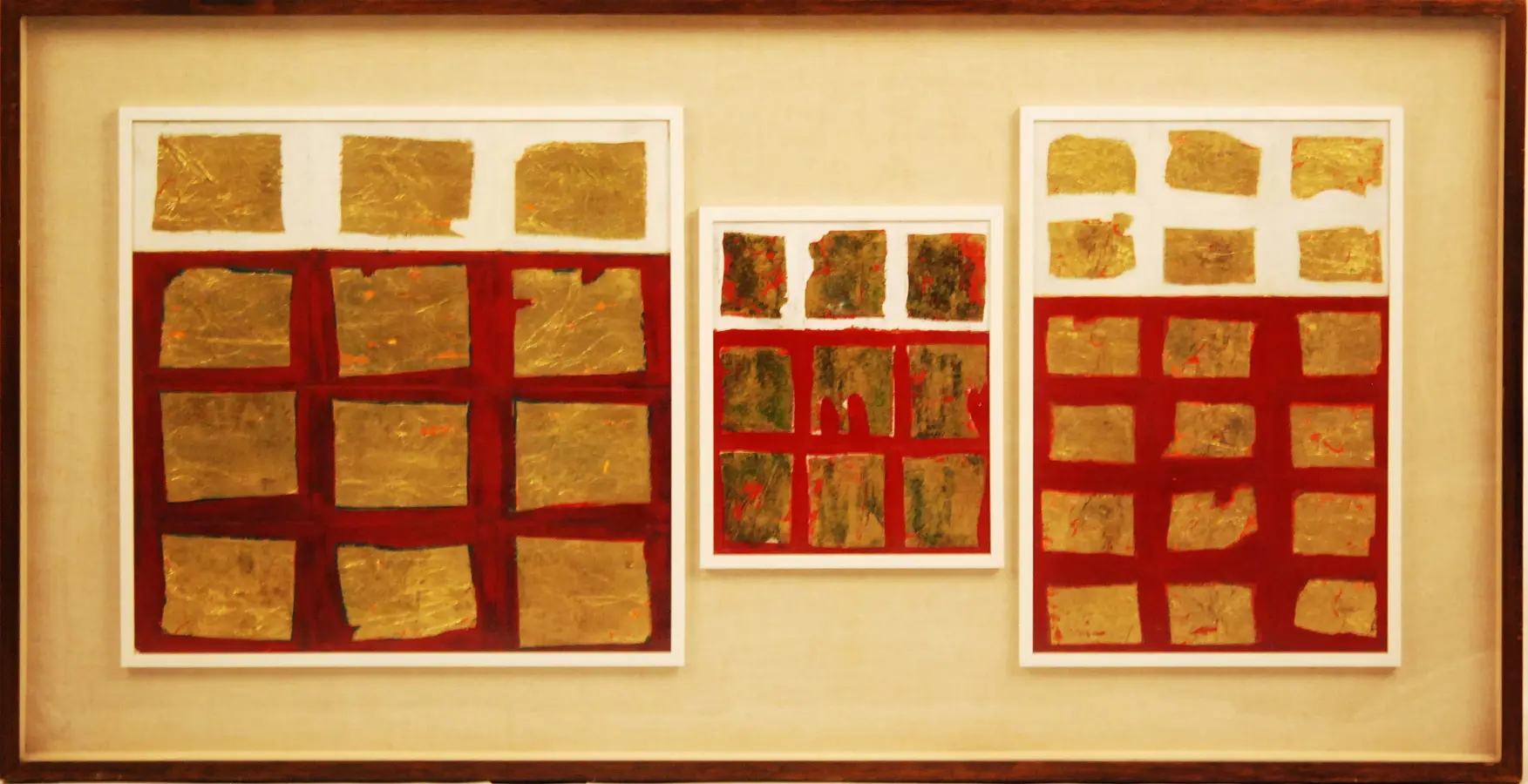
Tableau doré – Senza titolo 1957. Trittico. Cm 65 x 117. N. Archivio: FRB1606. Museo del 900, Milano
The first Tableaux Dorés come on the scene in 1957 and these works constitute one of the most popular cycles of the artist as well as the most long lasting. The two color background, worked with oil or varnish on which the gold leaves are arranged, results in a white part near primary colors. Others have a monochrome background or they are made with straw or cloth.
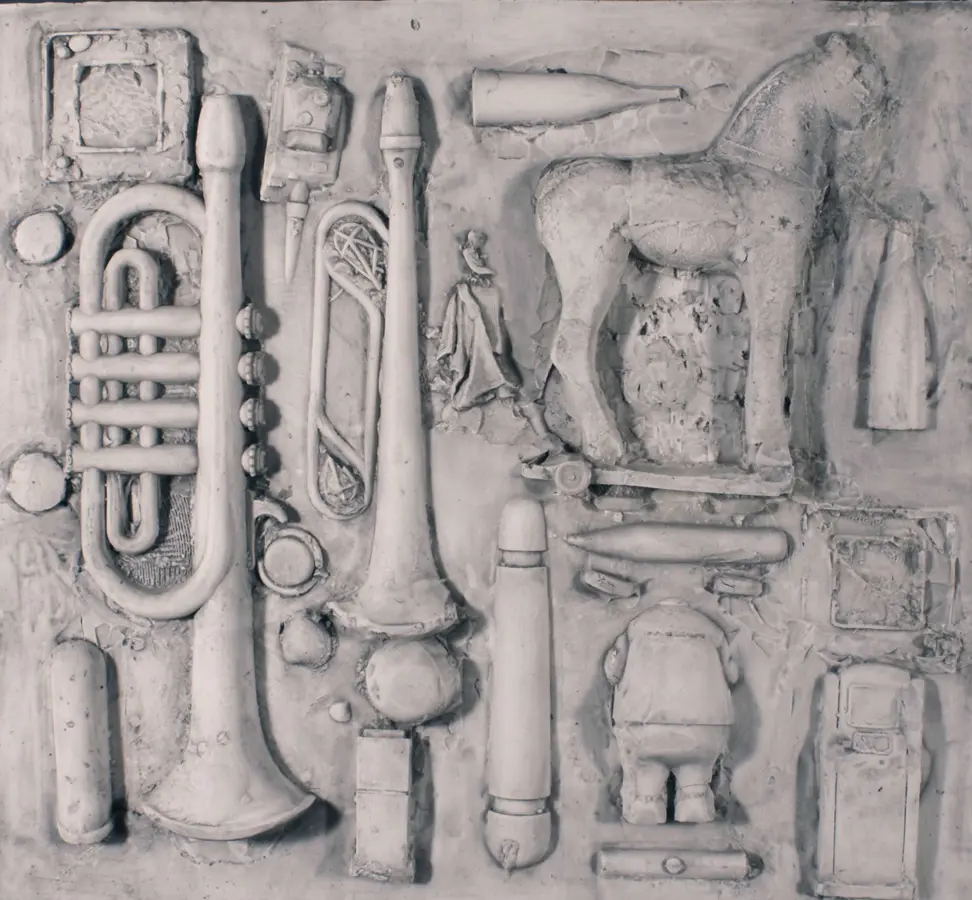
Impronta (Giocattoli) 1956 c., cm 42 X 47. Collezione Manuela Milan Lodi.
Starting from 1965 the artist gives life to some works which go under the definition of “Arte sovrastrutturale” (Superstructure Art) which, through an “artistic appropriation” of objects, things and persons express the need to memorize in an indelible way reminiscences and reality. Pertaining to this definition are the Snow Sculptures, poetic small theaters in which the characters are common objects taken from the worlds of childhood, nature or simply daily life, covered with artificial snow and arranged in transparent cases: motionless under the white mantle covering them, the composition transports the spectator in an enchanting and timeless dimension.
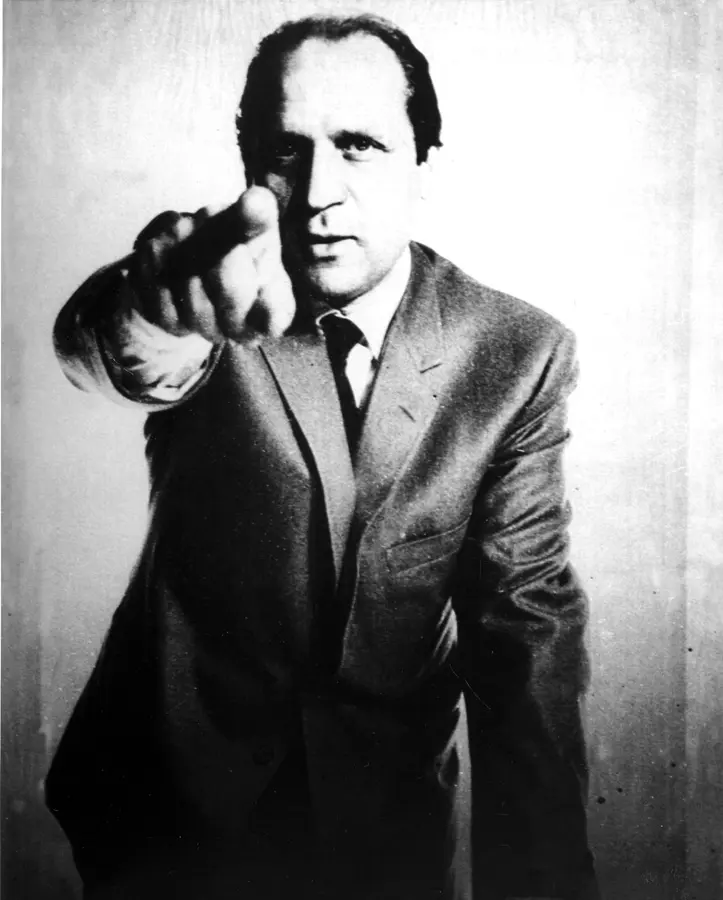
Quadro parlante - Scusi signore, 1972-1974 c. cm 109 x 98. Collezione privata.
The Talking paintings, exhibited for the first time in 1974, are canvasses which in some cases are in plain white or black cotton and in others impressed with photographs, on the back of which are placed amplifiers. As the spectator approaches, the amplifiers are activated and emit sounds or phrases registered by the artist. The most well known is “Excuse me sir….” where Bianco’s self portrait is shown with his finger pointing, an image already used in 1965 when, during a personal exhibition at the Naviglio Gallery, the photo appeared on all the trams of Milan so as to engage the entire community. The inclusion of a human voice represents the attempt to go beyond the traditional dimension of a painting. The theme is the need to create a dialogue with the public, transforming the canvas not in a theater of representation but in a place where one can listen, above all a place of reminiscence, a focal point for most of the artist’s career.
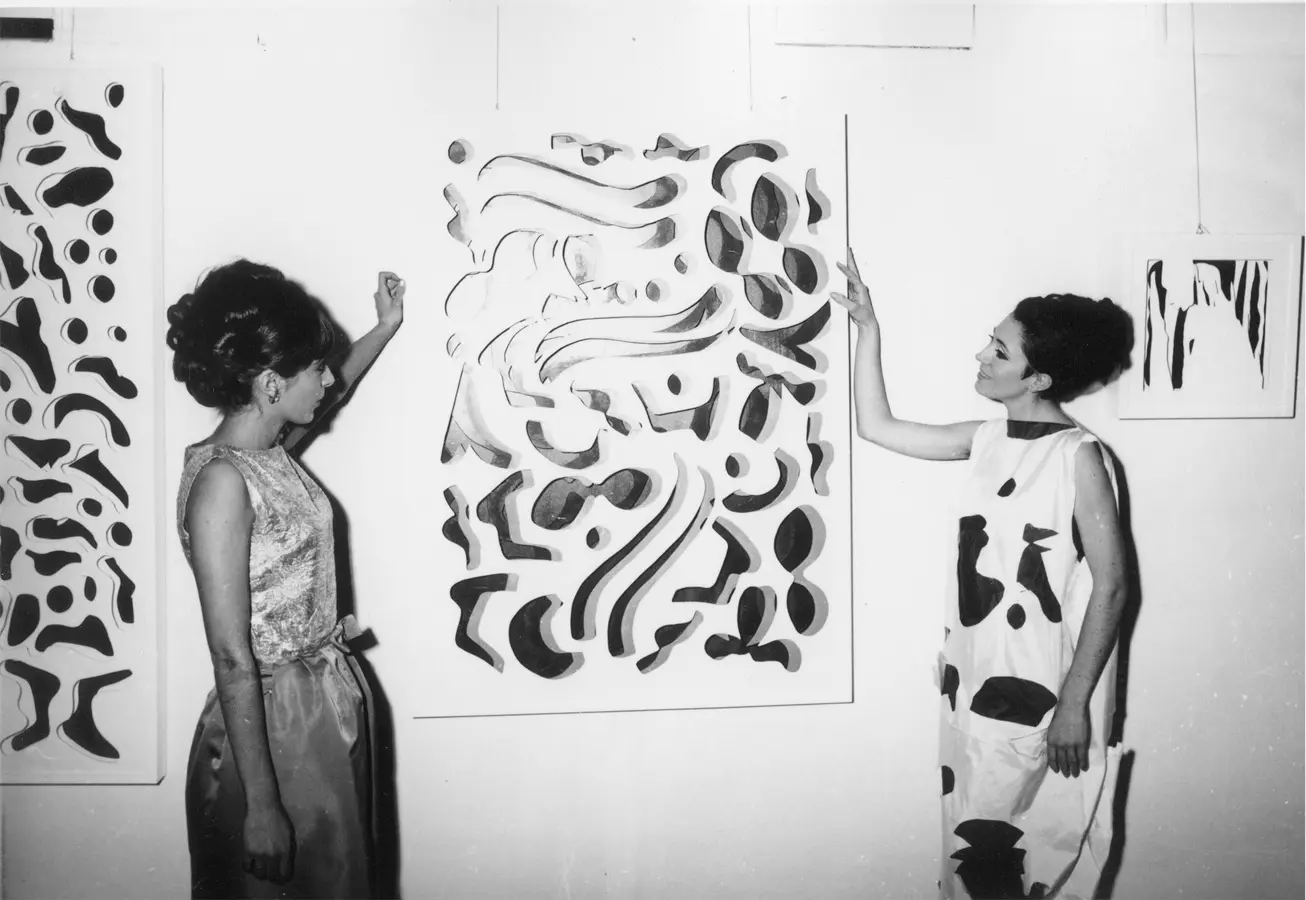
Tableau doré – Senza titolo 1957. Trittico. Cm 65 x 117. N. Archivio: FRB1606. Museo del 900, Milano
The exhibition at the Museo del Novecento retraces Remo Bianco’s rich and surprising career, exploring precisely the theme of reminiscence, through his works and through a comprehensive documentary archive: catalogues, posters, articles and vintage photographs. The exhibition catalogue, edited by Silvana, is accompanied by texts by Lorella Giudici and Elisa Camesasca, apparatus curated by Gabriella Passerini and Alberto Vincenzoni, and in- cludes an interesting interview of Marina Abramovic of 2012, regarding the works of Remo Bianco, whom she met in 1977.
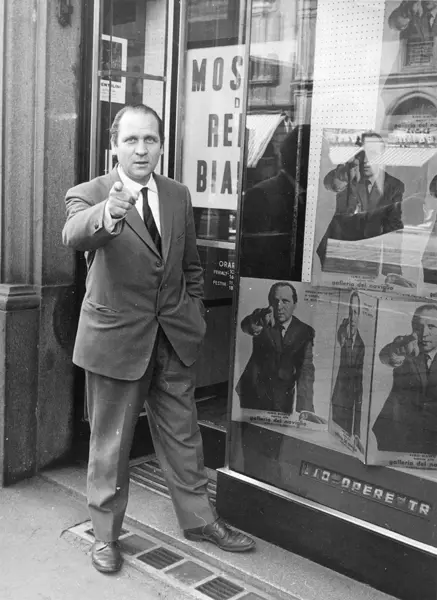
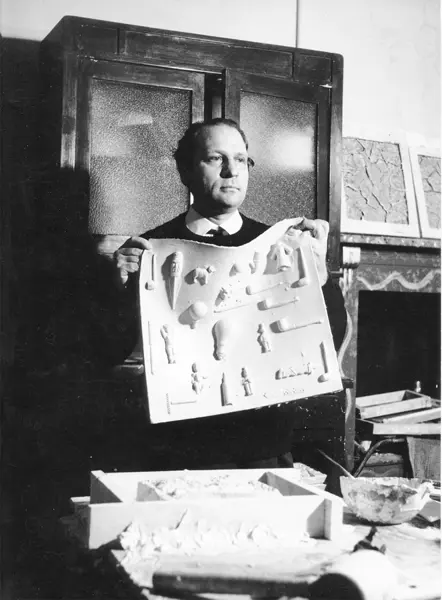
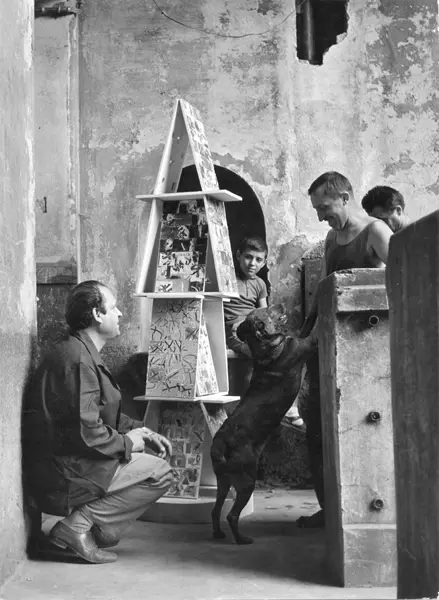
The exhibition
Remo Bianco. The imprints of memory.
Museo del Novecento, piazza Duomo 8, Milan. From 5 July to 6 October 2019. Hours: Monday 2.30 pm - 7.30 pm; Tuesday, Wednesday, Friday and Sunday 9.30–19.30; Thursday and Saturday 9.30–22.30. Info: www.museodelnovecento.org
How to reach Milan by plane
Edited by Nicolò Villa
Source and Photos: Museo del Novecento/Comune di Milano Press Office;
Archive Remo Bianco Press Office
Visual Milan: © Sisterscom.com, Shutterstock
All rights reserved. Copyright © Sisterscom.com
Where to sleep in Milan
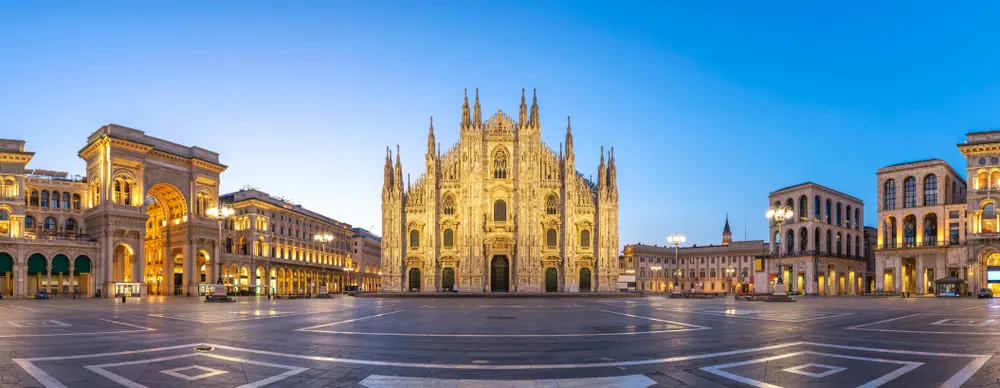
Milano, © Sisterscom.com, Shutterstock
Milan is a welcoming city and offers different possibilities for accommodation.
To find the ideal hotel and the best offers you can do a search for the stars but also for districts or landmarks.
Districts
Hotels in the districts
Landmarks
Hotel in tourist areas
Landmarks
Hotel in tourist areas
Airports
Hotels near the airports
You might be interested in
Destinations

Events
Italian cuisine is an Intangible Heritage of Humanity
UNESCO recognizes Italian culinary excellence worldwide, strengthening the Italian cultural identity and increasing the tourist attractiveness of the country for those who travel to discover authentic flavors
Destinations

Events
Milan will host the CAPA World Aviation Summit 2026
Top managers and international aviation players will meet in the Lombard capital to discuss sustainability, innovation and future strategies of the sector
Destinations

Events
World Tourism Day
It is celebrated on September 27 in Melaka (Malaysia) and this year's theme is "Tourism and Sustainable Transformation". It will be followed by the WTTC Global Summit in Rome from 28 to 30 September 2025


